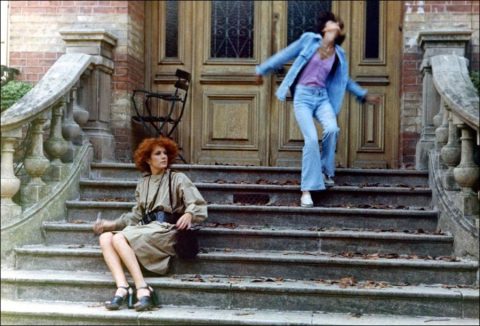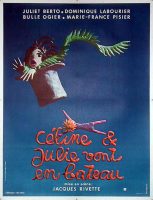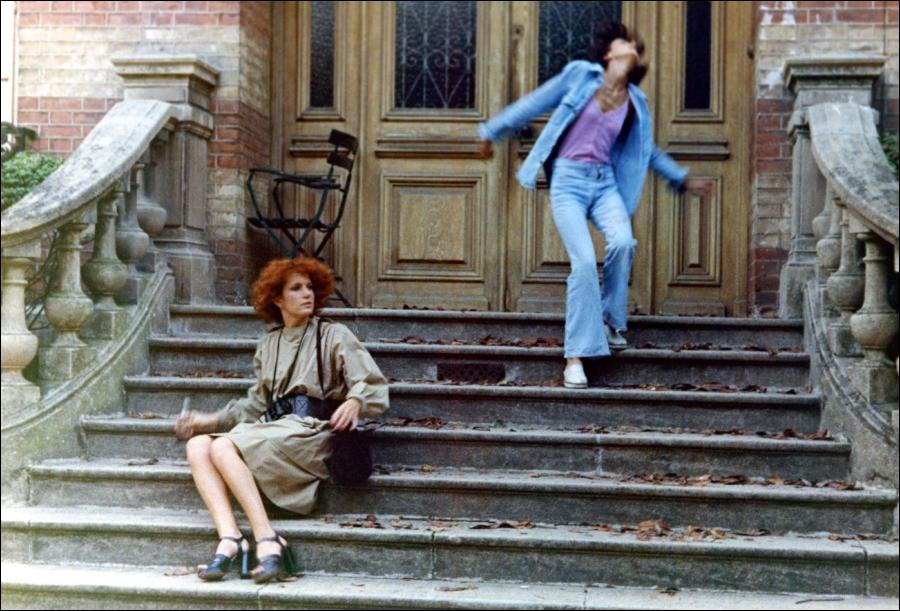French director Jacques Rivette, who is one of the fixture names of the New Wave movement, has created a cinematic understanding with every production, beyond revealing the first examples of this movement.
What makes up a story? How to achieve a holistic fiction without a linear bond between parts? Can a context be established without time and space? The answers to these questions fall into the screen in Rivette’s productions. Céline et Julie vont en bateau, Rivette’s 1974 film, which is translated to Turkish as Celine and Julie’s Sandal Campaign, is one of the best examples of this in terms of form and fiction.
The opening scene of the film begins with one of the two characters, Julie (Dominique Labourier), reading a spell book in a park. Meanwhile, Celine (Juliet Berto), who passed by, leaves some items behind and the long-term follow-up that Julie continues to collect these items one by one begins. In this follow-up process, Rivette transfers magical reality elements to the screen in an absurd language and creates an independent whole by bringing together stories that progress on cause and effect relationships, but without a certain beginning and end. The movie, which carries traces of Lewis Carol’s White Rabbit from the opening stage to the end, can be seen as a postmodern adaptation in one aspect, but it is also a collage of three separate parts.
In the first part of the fiction, Julie and Celine turn their fiction upside down by changing their identity at the end of the escape and pursuit process between them; Julie, who now leaves traces and escapes unknowingly, is Celine who tries to unravel this mystery after her. Then a new scene and a new game begins. The couple, who suddenly appear and disappear in the house in which they work as a nanny, find themselves in an order that they do not remember what happened the previous day, but constantly repeats. At the end of this episode where time and space begin to disappear, they begin to play with these two concepts thanks to a candy that they mysteriously find. As they absorb sugar, they return to the reality of the events they experience in the house where they work.
In the third part, they have to shed light on a strange murder inside the house. This time the duo changes dialogues, mocks them as if they are aware that they are on a movie screen, and rewrites the script of the movie themselves. Thus, the fiction that turns into an actress and toy relationship turns into a chain of stories on the surface, on the other hand, gives the viewer the impression that everything is a conscious game that happens outside of naturalness. At the end of the movie, the scene that Julie encountered with Celine at the beginning is shown again by changing the locations of the characters. So everything that is said is nothing but a repetition of the previous fiction. With all these features, Céline et Julie vont en bateau becomes a manifesto of the New Wave, which contains all the features of postmodernism in one body.
Céline et Julie Vont en Bateau (1974)
Directed by: Jacques Rivette
Starring: Juliet Berto, Dominique Labourier, Bulle Ogier, Marie-France Pisier, Barbet Schroeder, Nathalie Asnar, Marie-Thérèse Saussure, Philippe Clévenot, Anne Zamire
Screenplay by: Juliet Berto, Dominique Labourier
Cinematography by: Jacques Renard
Film Editing by: Nicole Lubtchansky
Costume Design by: Jean-Luc Berne, Pierre D’Alby, Laurent Vicci
Makeup Department: Ronaldo Abreu
Music by: Jean-Marie Sénia
MPAA Rating: None.
Distributed by: Les Films du Losange
Release Date: September 18, 1974
Views: 137






